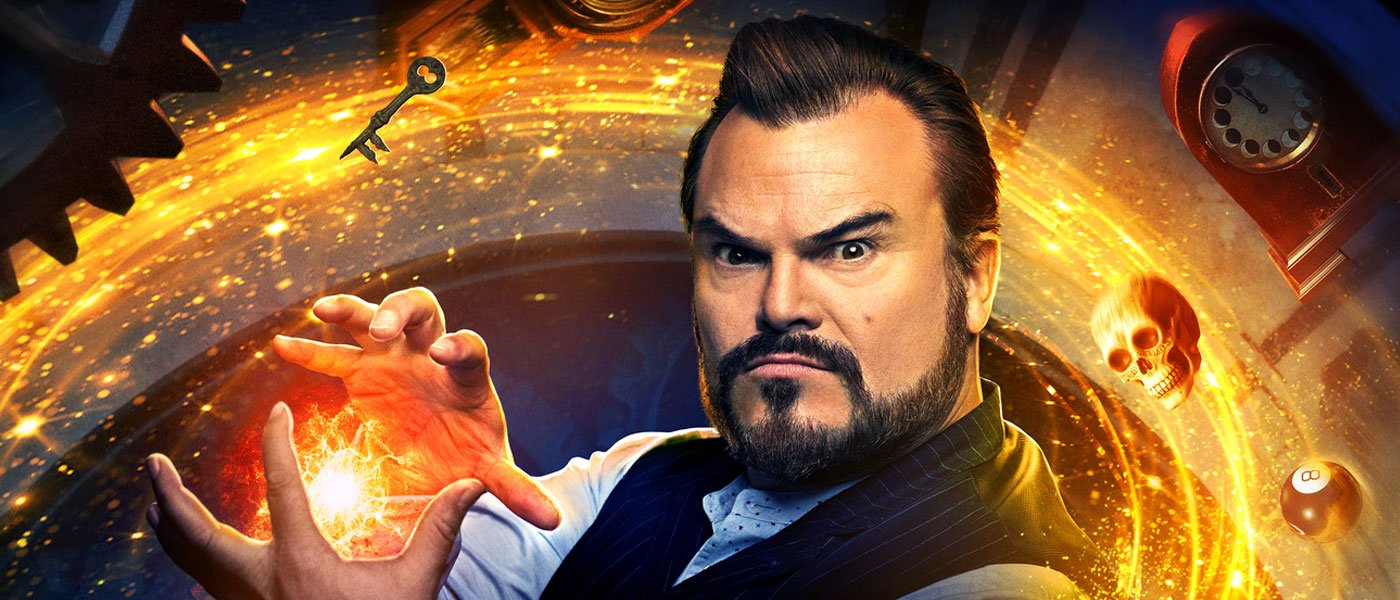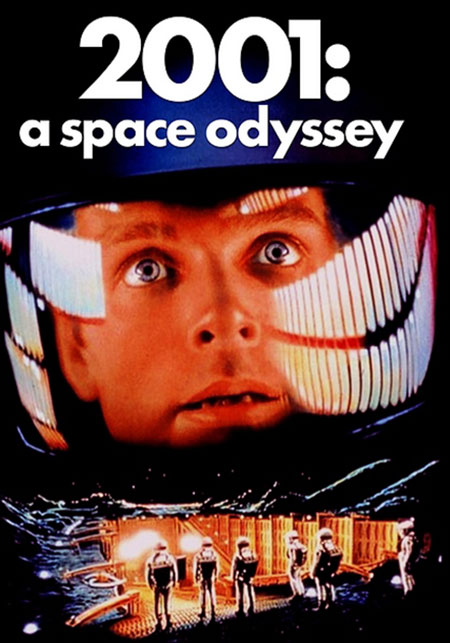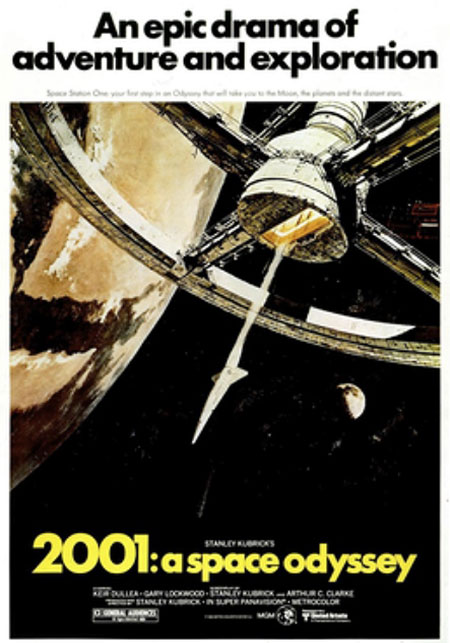In 1968, Stanley Kubrick’s masterpiece, 2001: A Space Odyssey, was released. Although we didn’t realize it, this film would go down in movie history, and it still stands up today, 50 years later, with its landmark special effects. It is a story of what Arthur C. Clarke thought space exploration might be like in 2001. Of course, obviously, the events shown in the film did not occur that soon, and indeed, have not occurred even now by 2018.
Nevertheless, the film is extremely entertaining. It was shot on 70 mm film, with a separate six track audio recording on 35 mm film.
Having six audio tracks was ideally suited for the musical score that accompanied so much of the story, not the least of which was the opening sequence that had Richard Strauss’ Also Sprach Zarathustra.
Here are two promo cards.
The two images at 2.20:1, below, illustrate the astounding sharpness of the image. 70 mm is truly amazing (the image was 65 mm wide). Too bad it was so expensive. Very few films were shot on this medium.

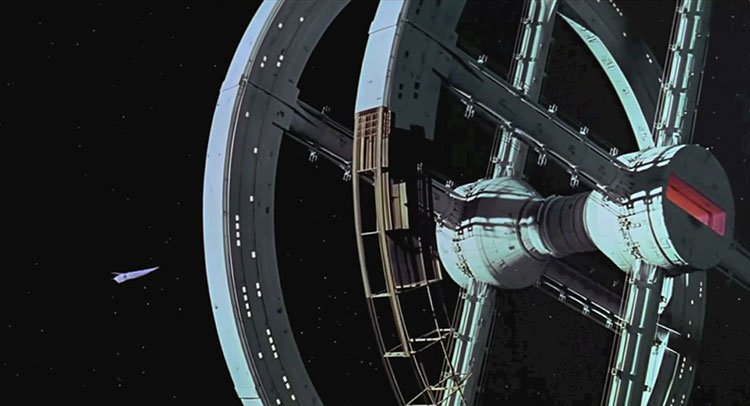
This scene (below) has a stewardess reaching for a ball point pen that was “floating” in the aisle. The pen floated smoothly, rather than wobbling that would have occurred if it had been suspended by black thread. The smooth floating was accomplished by mounting the pen on a sheet of glass that was rotated in front of the camera lens. Very cool technology for the day. It would have been done with CGI (Computer-Generated Imagery) if the movie were made in 2018, and CGI is not real, so it cannot actually look “real”. The pen in this shot is really there. So are other objects such as space stations. They were scale models of course, but were real, not computer graphics.
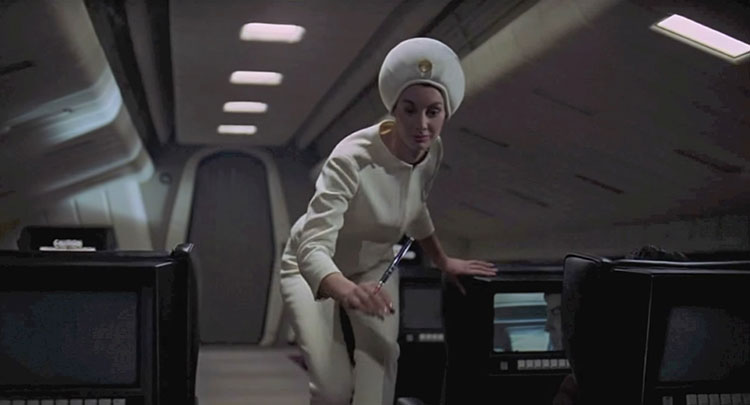
The following two photos show that the movie was released in more than one aspect ratio. It was shot at 2.20:1 on 70 mm film (the image was 65 mm wide) but was also distributed on 35 mm anamorphic 2.35:1 film to theaters that did not have 70 mm projectors. The penalty was having some of the image at the top and bottom cut off. In the first photo, the stewardess walks around the center passageway. This was created by mounting the camera in the enclosure that contained the set, and rotating the enclosure slowly. The actress then walked around the center passageway as the real floor outside moved from the bottom to the side.
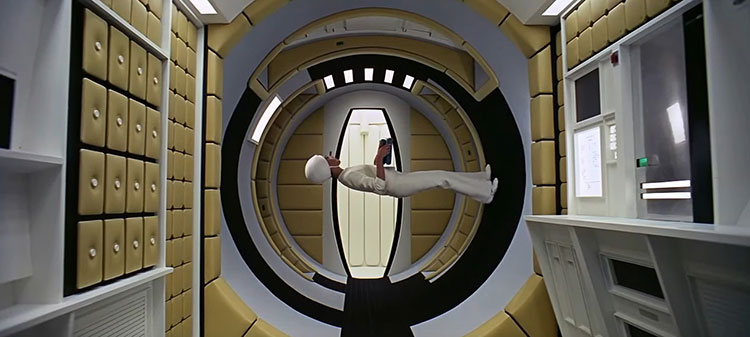
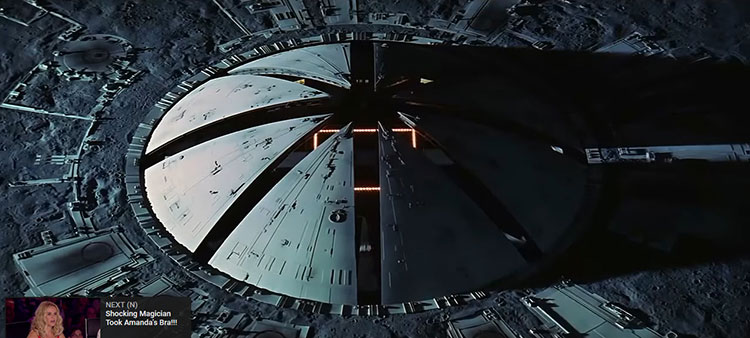
Here is a photograph of my 4K UHD-TV with the 2001 4K disc playing. It shows someone accessing a computer panel. Notice the text on the monitor screen immediately above his left hand.
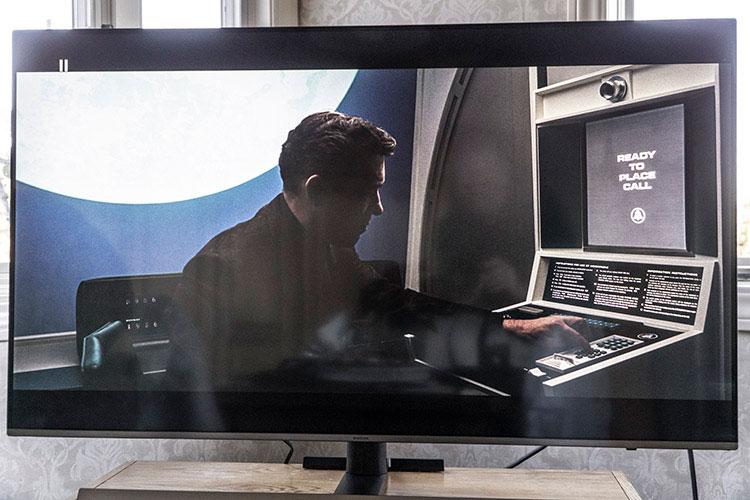
Now look at the closeup photo of the text on that monitor screen. The first line can be read, “INSTRUCTIONS FOR USE OF VIDEOPHONE.” Remember when we just had regular old TV, at 330 lines of resolution? Now it is more than 2,000 lines.
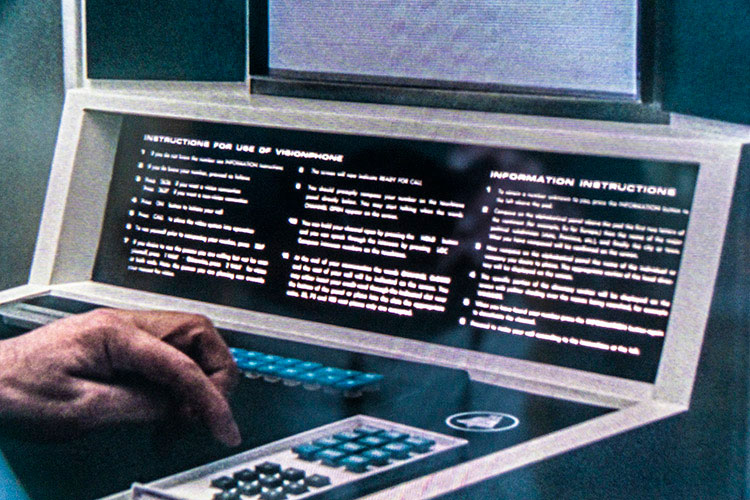
The audio was six track magnetic, originally recorded on 35 mm film. The results were five speakers behind the screen and one mono surround channel. So, even though it had six audio tracks, it was not really surround sound.
Secrets Sponsor
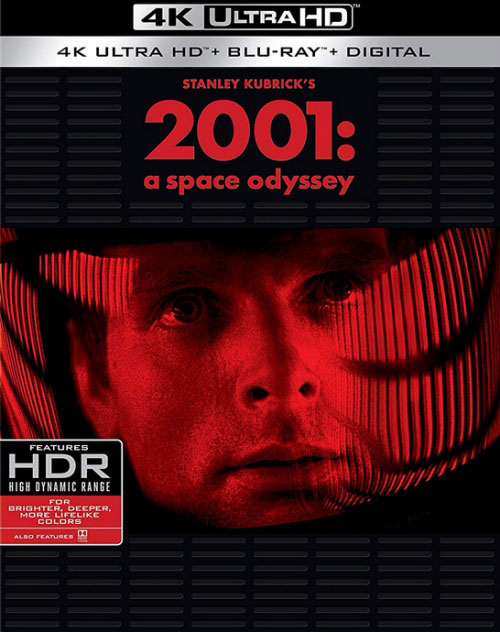
(1968), 2160p, DTS-HD MA 5.1, Dolby Digital 5.1, Rated G, 2 Hours 22 Minutes
2.20:1 Aspect Ratio, Super Panavision 70 mm, 6 Track Audio
Starring: Keir Dullea, Gary Lockwood, William Sylvester
Directed by Stanley Kubrick
Rating
Violence: Mild
Sex: No
Language: No
4K, if you don’t already know, has 4X the resolution of HD. Instead of 1080p, it is 2160p. On the surface, this appears to be 2X, but you have to remember that the resolution is Height x Width, and if the height and width are 2X, then height x width is 4X.
Secrets Sponsor
Although most movies shot on film (as compared to today’s technique of shooting them with high definition – 4K, 8K – video cameras) were transferred to the release prints by contact-printing the camera negative, thereby eliminating resolution loss that would occur if transferred by projecting through a lens, converting an old movie on film to 4K digital (or any digital format) requires projecting the camera negative or release print through a lens. The 4K releases do not say how the 4K transfer was made. All we can do is look at the results.
2001: A Space Odyssey, in 4K (2160p), is definitely sharper than HD (1080p). It also has HDR (High Dynamic Range), which brings out detail in highlights as well as shadows. HDR is, in my opinion, as valuable as the increase in resolution. It gives the image more visual “punch”.
To view a 4K movie, you need a 4K player, an HDMI 2.0 cable, and a 4K TV. There are 4K players that are really inexpensive, and I don’t know how good they are. You get what you pay for. I use an OPPO UDP-205 player and a Sony 75” UHD TV.
2001: A Space Odyssey in 4K is a very worthwhile purchase for your movie collection, even if it is just to show your friends what 4K looks like at its best when viewing movie discs.


